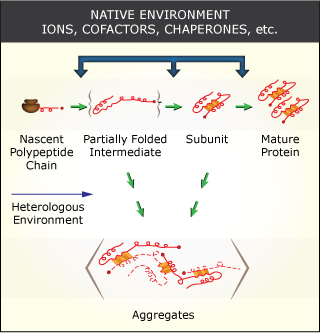Course Description
This course covers amino acid sequence control of protein folding, misfolding, amyloid polymerization and aggregation. Readings and discussions address topics such as chaperone structure and function, folding and assembly of fibrous proteins, and pathologies associated with protein misfolding and aggregation in …
This course covers amino acid sequence control of protein folding, misfolding, amyloid polymerization and aggregation. Readings and discussions address topics such as chaperone structure and function, folding and assembly of fibrous proteins, and pathologies associated with protein misfolding and aggregation in Alzheimer’s, Parkinson’s, Huntington’s and other protein deposition diseases. Students are required to write and present a research paper.
Course Info
Instructor
Departments
Learning Resource Types
group_work
Projects
assignment
Written Assignments

(Image by MIT OpenCourseWare, adapted from image by Professor Jonathan King.)










